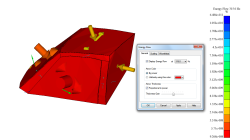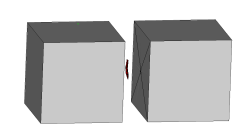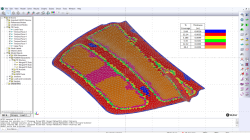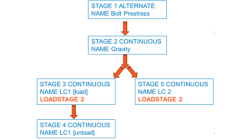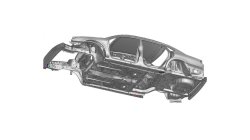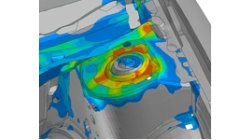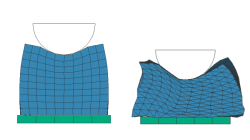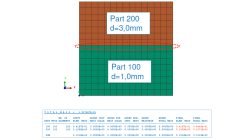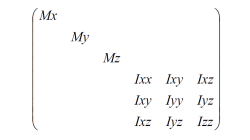- Home
- Resources
- Tips & Tricks
Tips & Tricks
SEA - Display energy flow for a subsystem in complex models
In a complex SEA model made out of several subsystems, VA One can be used to display the energy flow to a particular subsystem in a couple of steps, this helps to understand how the energy flows to a receiving subsystem in order to define noise control strategies. One of the steps is to isolate the junctions associated to this subsystem, this will also help to understand / verify the connectivity of the model.
Ricardo
Alvarez
Vibro-Acoustics
SEA - Virtual Transmission Loss
In a complex SEA model made out of several subsystems, using VA One is possible to extract the transmission loss (TL) of one or various subsystems in a single step. Transmission loss of partitions e.g. walls, floor, windows, enclosures have been studied theoretically and experimentally over many years. Partitions are often inhomogeneous, non-uniform, comprise combinations of different materials, have indeterminate boundary conditions and are subject to sound complex fields. Surprisingly the sound transmission behavior of many plane partitions is quite well represented by a simple model which ignores the boundaries. Sound transmission loss can be used to correlate the vibro-acoustic behavior of simple and/or complex systems.
Ricardo
Alvarez
Vibro-Acoustics
VA One - FE or SEA- How to map trim thickness for sound package representation
Sound control treatments / Trim ,(e.g. headliners,hood liners, dash panel and floor isolators, etc) have complex shapes with variable thickness, sometimes only CAD parts are available. How can I use this data to create noise control treatments (NCT) in FE and/or SEA models with variable thickness?. In this article it is shown how to create a variable thickness noise control treatment with VA One for SEA and/or FE purposes at the same time. A multiple noise control treatment (MNCT) is created for SEA purposes and multiple FE Faces with the mapped/discrete thicknesses are created for FE purposes,
Ricardo
Alvarez
Vibro-Acoustics
Find dominant path in SEA models
Statistical energy analysis (SEA) computes the flow of vibrational energy between coupled subsystems by applying principle of conservation of energy. Using conservation of energy power balance equations which govern response of a system. Since it is based on energy flow, path analysis is straight forward. In this article it is described how to extract the dominant path in a complex model using SEA and VA One . As a result the subsystems in the dominant path are displayed in the 3d window (All other subsystems are hidden).
Ricardo
Alvarez
Vibro-Acoustics
Managing Multiple STAGE with Virtual Performance Solution (VPS)
This tip provides some information on the usage of multi stage runs in Virtual Performance Solution (VPS)
Jean-Christophe
Allain
Virtual Performance
Using Inertial Relief
This tip provides some background information on how to model static cases without considering the effect of boundary conditions in Virtual Performance Solution (VPS)
Jean-Christophe
Allain
Virtual Performance
Preloading BOLTS
This tip provides methodology to pre stress elements in Virtual Performance Solution (VPS) to model Bolt assemblies.
Jean-Christophe
Allain
Virtual Performance
Hints on the usage of linear Tetrahedron (TETR4 / ) elements
This tip provides some background information on the question, when, or when not, to use the linear tetrahedron (TETR4 / ) element in Virtual Performance Solution (VPS)
Jürgen
Rueckert
Virtual Performance
Why do total mass, sum of part masses and sum of nodal masses not match ?
This tip discusses the possible discrepancies in informations concerning total mass, part masses, nodal and element masses, given in the Virtual Performance Solution (VPS) output listing.
Jürgen
Rueckert
Virtual Performance
Which moments of inertia to use in added mass (MASS / ) cards ?
This tip discusses the choice of physically meaningful numbers to be used, when moments of inertia need to be specified in an added mass definition.
Jürgen
Rueckert
Virtual Performance
